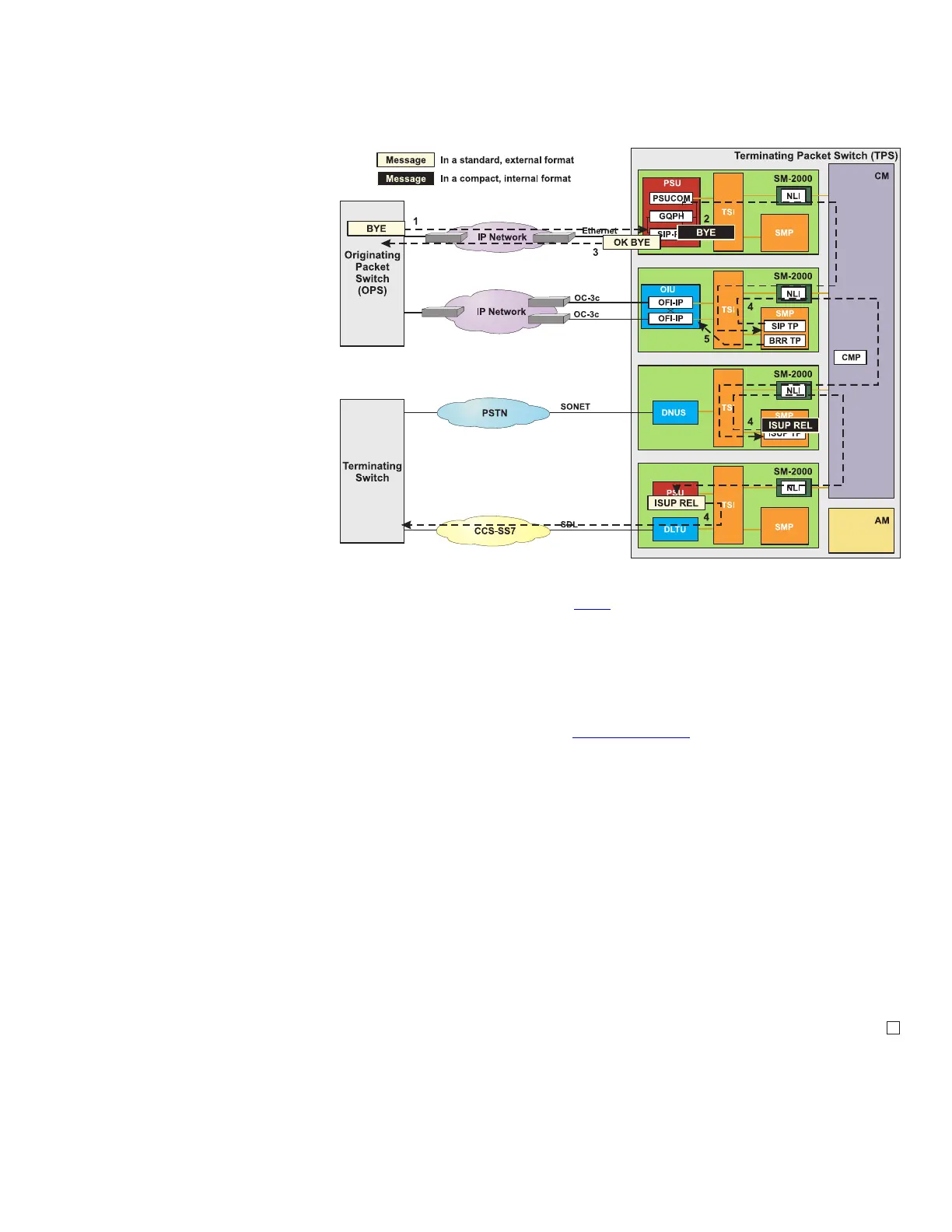1. The SIP PH receives a BYE message from the OPS. The
message informs the TPS the calling party went on-hook..
2. The SIP PH strips the SCTP and IP headers, compacts the
message to the internal SIP format, and forwards the message to
the SIP terminal process.
3. The SIP PH builds the 200 OK (BYE) message in standard,
external SIP format, adds the appropriate SCTP and IP headers,
and forwards it to OPS via the IP signaling network.
4. The SIP terminal process passes the updated call state to the
ISUP terminal process. An ISUP REL message is formulated and
forwarded to the ST PH in the SS7 GSM. Finally, the message is
sent to the terminating switch.
5. The SIP terminal process passes the updated call state to the
bearer terminal process. The bearer terminal process takes steps
to tear down the call by closing the port on the OFI and releasing
used timeslots.
6. Call flow is complete
Detailed Call Scenarios - SIP Base
Call Flow
....................................................................................................................................................................................................................................
235-200-118
Issue 3.02B, March 2007
Lucent Technologies
3-39
